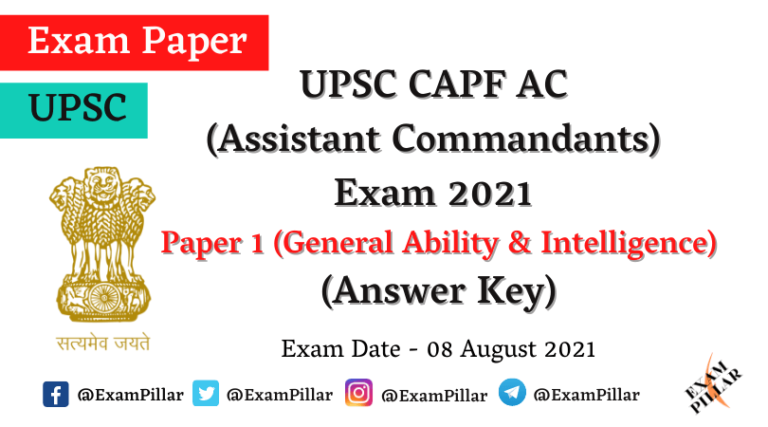16. Self-actualization needs are related to –
(A) Theory of insightful learning
(B) Field Theory
(C) Information Processing Theory
(D) Maslow’s Humanistic Theory of learning
Click To Show Answer/Hide
17. Sensory memory is also known as –
(A) Immediate Memory
(B) Short-Term Memory
(C) Long-Term Memory
(D) None of these
Click To Show Answer/Hide
18. Which of the statements are true about creativity and intelligence?
(i) The relationship between creativity and intelligence is positive.
(ii) Intelligence does not ensure creativity.
(iii) Creativity tests involve divergent thinking whereas intelligence tests involve convergent thinking.
(A) (i) and (ii)
(B) (i) and (iii)
(C) (ii) and (iii)
(D) (i), (ii) and (iii)
Click To Show Answer/Hide
19. The level of consciousness which is considered as the reservoir of instinctive or animal drives is –
(A) Unconscious
(B) Preconscious
(C) Conscious
(D) None of these
Click To Show Answer/Hide
20. The kind of defence mechanism in which anxiety provoking behaviours or thoughts are totally dismissed by the unconscious is –
(A) Denial
(B) Repression
(C) Projection
(D) Rationalisation
Click To Show Answer/Hide
21. Who talked about identity crisis in his theory of personality?
(A) Alfred Adler
(B) Sigmund Freud
(C) Erik Erikson
(D) None of these
Click To Show Answer/Hide
22. ‘Self’ refers to –
(A) those attributes of a person that make her/him different from others.
(B) those aspects of a person that link her/him to a social or cultural group or are derived from it.
(C) the totality of an individual’s conscious experiences, ideas, thoughts and feelings with regard to herself or himself.
(D) None of these
Click To Show Answer/Hide
23. Which of the following is a characteristic of personality?
(A) It has both physical and psychological components.
(B) Its expression in terms of behaviour is fairly unique in a given individual.
(C) Its main features do not easily change with time.
(D) All of the above.
Click To Show Answer/Hide
24. The pioneer of ‘trait approach of personality’ is –
(A) Raymond Cattell
(B) Gordon Allport
(C) H.J. Eysenck
(D) Sigmund Freud
Click To Show Answer/Hide
25. The theory of observational learning was given by –
(A) Pavlov
(B) Skinner
(C) Bandura
(D) None of these
Click To Show Answer/Hide
26. A girl child is working very hard for her examination. Her behaviour is an indicator of her –
(A) Sharp cognitive abilities
(B) High achievement motivation
(C) Very Busy schedule
(D) Desire to impress her parents
Click To Show Answer/Hide
27. “Rewards play a significant role in learning”, is the main characteristic of which of the following approaches of learning?
(A) Behaviouristic
(B) Cognitive
(C) Humanistic
(D) Scientific
Click To Show Answer/Hide
28. ‘Negative Reinforcement’ means –
(A) Not presenting any stimulus.
(B) Presenting an unpleasant stimulus.
(C) Punishment.
(D) Terminating an unpleasant stimulus.
Click To Show Answer/Hide
29. Programmed Learning is based on –
(A) Field theory
(B) Operant conditioning
(C) Gestalt learning theory
(D) Classical conditioning
Click To Show Answer/Hide
30. A mathematics teacher discusses some problems in the classroom and then asks the students to work out some problems given in the book. Students are practising the law of –
(A) Contiguity
(B) Reinforcement
(C) Readiness
(D) Exercise
Click To Show Answer/Hide
| Read Also : |
|---|





Leave a Reply